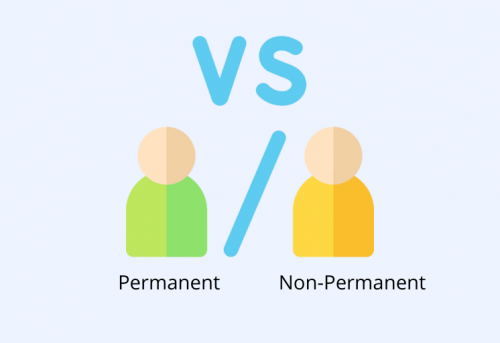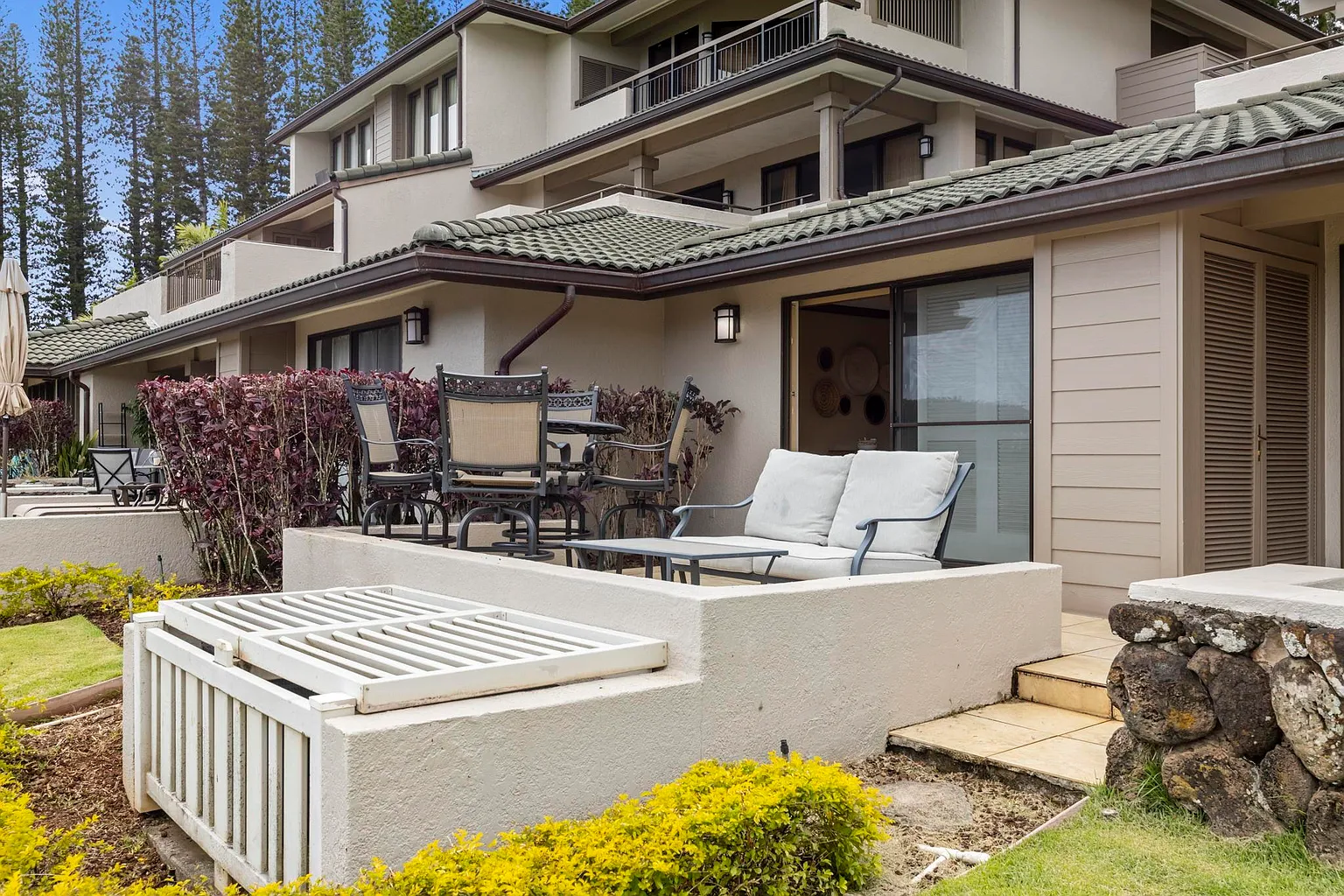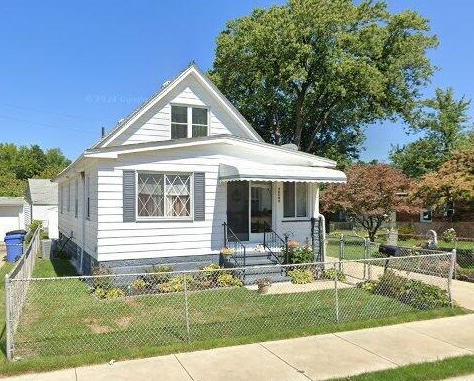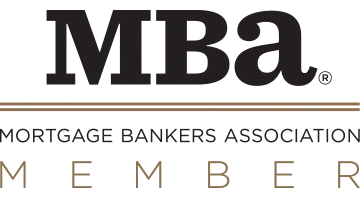When it comes to getting a mortgage in the United States, there are two main types of applicants: Permanent Residents and Non-Permanent Residents. If you are a permanent or non-permanent resident alien in the US, there are different mortgage options available to you.
Permanent resident aliens have the option of obtaining a “green card” mortgage, while non-permanent residents have the option of obtaining a “temporary visa” mortgage. Both types of mortgages have their own benefits and drawbacks, so it is important to understand which one is best for you. This blog post will explore the differences between permanent and non-permanent resident alien mortgages in the US and will help you decide which one is right for you.
Table of Contents
What is the Difference Between a Permanent and Non-Permanent Resident Alien?
In the United States, there are two sorts of non-citizens: Permanent Resident Aliens and Non-Permanent Resident Aliens.
Permanent Resident Aliens
Permanent resident aliens have both a social security number and a green card from the United States Citizenship and Immigration Services (USCIS), which equates to permanent residency; non-permanent resident aliens have only a social security number and no green card.
Permanent resident aliens can get a mortgage in the United States rather easily because they only need to present a valid green card and their social security number, along with other standard documentation. The qualification process is very similar to that of a US citizen.
Non-Permanent Resident Aliens
Non-permanent resident aliens, on the other hand, must demonstrate that they intend to live in and utilize the home they are purchasing as their principal residence. They must present their work permit, commonly known as the Employment Authorization Document (EAD), as well as their social security number.
If the borrower does not have an EAD, he can present a special visa sponsored by his employer as proof of lawful status. Acceptable visas include the H1B and other H series visas such as the H-1C, H-2, H-3, and H-4, the Canadian and Mexican NAFTA series, the E series, the G series, the L series, the NATO series, and the O series visas.
All work eligibility documentation must demonstrate the borrower’s capacity to live and work in the United States for at least three years. Depending on your case and situation, you may be requested to facilitate additional paperwork for mortgage approval.
Furthermore, the significant presence test can decide whether a foreign individual is a resident or nonresident of the United States for tax reasons.
Permanent and Non-Permanent Resident Alien Mortgage Options
The type of mortgage you are eligible for depends on your residency status. Here’s a look at the differences between permanent and non-permanent resident mortgages in the US.
Permanent Resident Alien
If you are a permanent resident of the United States, you are considered a “lawful permanent resident” or “resident alien.” This means that you have been given the right to live and work in the US indefinitely.
- Permanent Resident Aliens have a good credit score and a steady income, which makes them ideal candidates for a mortgage.
- You are also eligible for most government benefits, including social security and Medicare.
- Permanent residents are able to apply for a Conventional Mortgage. This is a type of loan that is not backed by the government. Conventional loans typically have lower interest rates and down payment requirements than government-backed loans.
- To qualify for a conventional mortgage, you will need to have a good credit score and a steady income. You will also generally need to make a down payment of at least 5% of the purchase price of the home.
Non-Permanent Resident Alien
If you are not a permanent resident of the United States, you are considered a “non-resident alien.” This means that you do not have the right to live and work in the US indefinitely. You may also be ineligible for some government benefits.
- Non-permanent resident aliens might not have a good credit score, making it more difficult to qualify for a mortgage. In addition, they may not be eligible for some government benefits. HomeAbroad provides foreign national mortgage programs with no US credit history, and you can contact us for a quick quote and preapproval.

Pre-qualify for a US mortgage as an international buyer.
No US credit history needed.
- Non-permanent resident aliens are typically only eligible for a government-backed loan, such as an FHA loan. FHA loans are available to borrowers with less-than-perfect credit.
- The most common type of government-backed mortgage for non-permanent residents is an FHA loan. FHA loans are insured by the Federal Housing Administration, part of the US Department of Housing and Urban Development. To qualify for an FHA loan, you will need a valid Social Security number and proof of legal residency in the US. You will also generally need to make a down payment of at least 3.5% of the purchase price of the home.
- Another type of government-backed mortgage for non-permanent residents is a VA loan. VA loans are guaranteed by the US Department of Veterans Affairs. To qualify for a VA loan, you must be a veteran of the US Armed Forces or on active duty. You will also generally need to make a down payment of at least 3% of the purchase price of the home.
Qualify For a Mortgage: Permanent VS Non-Permanent Resident Alien Mortgage
When a consumer applies for a house loan, mortgage lenders require numerous pieces of documentation. They must first ensure that the prospective homeowner can afford the monthly mortgage payments on their loan.
When applying for a home loan, a permanent resident foreigner can anticipate to provide:
- His/her current green card and Social Security card. They can also use their passport and stamped I-551 documents instead of their green card.
- proof of income
Non-permanent resident aliens must submit:
- Social Security Number
- Employment Authorisation Document (EAD)
- Proof of income
- Ability to make mortgage payments.
- Visa Status
Lenders generally also require the following documents:
- W-2 forms (for the last two years)
- Employers for the past two years (names and addresses)
- Pay stubs for the most recent month
- 2 months of bank statements which include all pages
- Tax returns for the last two years
- A profit and loss statement (P&L) for the current year, if you’re self-employed
- Proof of other income, such as alimony and child support
- Investment account statements (savings, retirement accounts, brokerage accounts, etc.) to show proof of down payment and ability to repay the loan
- Credit score or proof of steady payment of bills (example: utility bills, rent)
What Are the Types of Mortgage Loans Options For Permanent and Non-Permanent Resident Alien Homebuyers?
All common mortgage sorts (conventional, FHA, USDA, and VA) are open to permanent and non-permanent resident aliens.
Some mortgage options available for them are:
Bank-Granted Home Loans
Green card holders and Permanent Resident Aliens, unlike non-US nationals living in the US on a work visa, can borrow money from local banks.
In addition, unlike visa holders, permanent residents are more likely to obtain mortgage approval. Again, this is because you are a permanent resident of the United States, and lenders are more certain that you will not leave the country. As a result, they are less eager to lend money to a green card holder.
The most common type of bank-granted home loan for permanent residents is a conventional mortgage. A conventional mortgage is not backed or insured by the government and usually has stricter requirements than other types of loans.
FHA (Federal Housing Association) Mortgages
The Federal Housing Administration (FHA) is a federal government body that insures mortgages made by FHA-approved lenders. First-time homebuyers prefer FHA loans because they often require a lesser down payment and credit score than conventional mortgages. However, they are not solely available to first-time buyers; anybody who fits the qualifying criteria can apply for an FHA loan.
FHA Loans are simple specialized loans with a 3.5% down payment required. Their credit standard parameters are significantly easier than their traditional counterparts. Your proof of residency should be valid for at least one year following the loan’s projected closing date.
While the federal government offers various house loan options, non-permanent residents commonly use one of two:
Fannie Mae: Fannie Mae is a government-sponsored enterprise that assists lenders in purchasing their loans. This permits lenders to lend out more money, which helps individuals buy homes.
Freddie Mac: Freddie Mac is a similar company that assists people in obtaining low-interest loans to purchase homes.
Both Fannie Mae and Freddie Mac offer non-permanent resident loan products.
Conventional and Non-Conventional Loans
Conventional Loan
A Conventional/Conforming loan is a mortgage loan that follows the rules established by government-sponsored businesses, i.e., Fannie Mae and Freddie Mac. Interest rates on conforming loans are typically cheaper. To qualify for a conventional mortgage, you will generally need a credit score of at least 620 and a down payment of at least 20%.
The government has guidelines that state it is the lender’s responsibility to prove that their borrowers are legally allowed to live in the country. This is particularly important for foreign buyers.
Borrowers of conventional mortgages, such as Freddie Mac and Fannie Mae, must provide:
- their social security number,
- proof of residency, and
- proof of income for at least three years.
- For a VA or conventional loan, the INS requires a valid visa as well as an EAD, which can be either an I-765 or an I-766.
- You may also be needed to present Form I-797A along with your I-94 or another valid work permit.
Non-Conforming Loans
A non-conforming loan is a loan that does not meet Fannie Mae or Freddie Mac guidelines. The most common reason for a non-conforming loan is because the size of the loan exceeds conforming loan limits.
Because non-conforming loans are easily sold on the secondary mortgage market, they have higher interest rates. A mortgage may be used to purchase a primary residence, a second home, or an investment property.
A non-conforming loan may necessitate a downpayment of higher than 20%, making it more expensive. A non-conforming loan may also have higher credit score requirements.
These are some of your alternatives. If you are unsure about the various mortgage alternatives or lenders, HomeAbroad can assist you in selecting the appropriate mortgage option and lender for you. Jumbo loans are an example of a non-conforming loan.
Steps to Apply for a Mortgage Loan in the US
Steps for Permanent Resident Aliens to Apply for a Mortgage Loan
Here is a step-by-step process to apply for a mortgage loan for your house as a permanent resident:
- Fill out an application form
- Attach and submit the required documents to the lender
- Pay the costs and fees involved in getting the mortgage
- Wait for pre-approval and processing of your application
- A legal site check will be done on the property
- Sign a check to process the property papers
- Sign the final deal and agreement papers
To learn about these steps in detail, you can refer to this Guide On Green Card Mortgages.
Steps for Non-Permanent Resident Aliens to Apply for a Mortgage Loan
Here is a step-by-step process to apply for a mortgage loan for your house as a non-permanent resident alien:
- Complete the loan application form
- Submit your documents
- Pay any required processing fee
- Wait for your preapproval or approval to come
- Processing of your offer letter
- Followed by a legal check, the property papers will be processed.
- Technical Checking And Site Estimation: What and how the property’ condition is
- Signing the final loan deal
- Sign the agreement
Refer to this guide (Guide to Foreign National Mortgage Loans with No US Credit) to get detailed information on the outlined steps.
How Does Interest Rate Compare for Both Types of Mortgages?
Permanent residents are able to take advantage of lower interest rates than non-permanent residents. In order to get the best mortgage terms, a high credit score is needed, along with other factors such as employment history and down payment size.
Permanent residents have an advantage when it comes to qualifying for a home mortgage. In addition to usually having lower interest rates, permanent residents also have access to a wider variety of loans. While non-permanent residents might be able to get approved for some types of loans, their options will typically be more limited.
If you are a non-permanent resident and you are interested in purchasing a home, it is still possible to get a mortgage. You will likely have to pay a higher interest rate, and you might need to make a larger down payment than what is required for a permanent resident.
It is important to compare mortgage options and shop around for the best rates before making a decision. HomeAbroad specializes in providing US mortgages for foreign nationals, including expats, newcomers, and non-resident investors buying primary residences, second homes, or investment property. Get a quote today!
Frequently Asked Questions
How long can I stay in the United States if I own property?
Buying a home in the United States does not ensure permanent residency. Instead, the amount of time you can stay in the nation is decided by your visitor visa or an employment-based visa, such as the B1 (business visa) or B2 (visitor visa), which is usually valid for six months and can be extended.
Other visas, such as the H1-B, allow foreign nationals to work and live in the United States for a few months or years. You can get more information about your stay from the US Department of State.
Since Covid and other visa waiver programs are not permitted to extend visas beyond 90 days, the U.S. Citizenship and Immigration Services has established special procedures for such visitors to obtain an “extension of satisfactory departure” for up to 30 days.
What Visas are Eligible to Get a Mortgage in the US?
Non-permanent resident aliens who intend to live in the home they are purchasing can qualify for a mortgage. In other words, they make their primary habitation at home.
When applying for a mortgage, lenders recognize the following visas as proof of legal residency:
H-1B and other H series visas such as H-1C, H-2, H-3 and H-4
E series
G series
L series
O series
NATO series
Canadian and Mexican NAFTA series
Any work eligibility document must indicate the applicant’s ability to live and work in the United States for at least three years. Each lender will request documentation based on its own guidelines and the borrower’s situation.
How long does it usually take to buy a home in the U.S.?
The average time it takes to buy a home is approximately 4.5 months, from the day you place your offer until your home is under contract. Then, it takes about 30 to 45 days to close the house and move in after that.




















